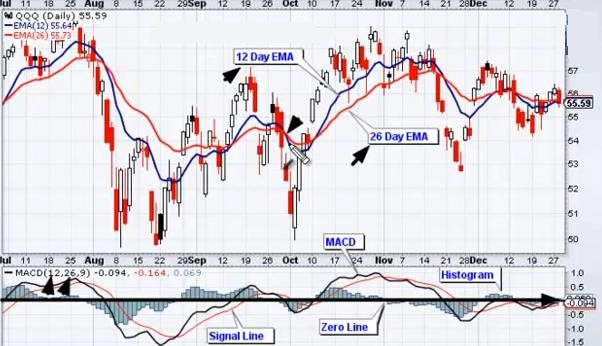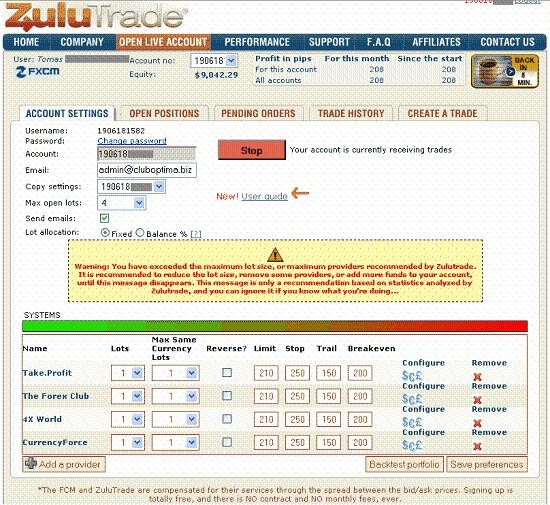Learn forex Daily Forex Trading News and Reviews
Post on: 9 Июнь, 2015 No Comment

Continuing Decline of Oil Prices
Oil prices declined again following the declaration of the United States that there was another peak in crude oil inventory.
However, prices were strongly off during trading sessions and repeated losses as market investors embraced additional short positions in US oil futures. This was one day earlier than forecasts made by industry groups.
Stocks increased to 7.7 million barrels during the past week which translates to 425.6 million barrels. The US Energy Information Administration announced that the six consecutive weeks were a record high for the duration.
It was twice the 3.2 million barrels projected by economic analysts but a long way from the 14.3 million barrels that were predicted by the American Petroleum Institute (API).
Brent and US Futures declined five percent last Wednesday after the report from API was published.
Brent went down 32 cents at $60.21 per barrel which was off the low of $57.80 for that day. It reached a two-month peak of $63 just the day before.
US crude was down 98 cents at $51.16. Analysts say another decline in oil rig count can increase prices.
Oil has dwindled based on reports about inventory builds by the EIA but recovered when figures revealed rigs drilling despite three year lows.
FOREX Market Movements Make ETFs Desired Financial Commodities
According to traders in the United States, unmanageable changes in the global currency market result into exchange-traded funds that outperform local currencies on their worldwide equity portfolios.
Hence, ETFs are among the most preferred financial commodities in 2015.
As the US dollar recovered more than 19 percent since last year, market investors are looking at gains in foreign stock markets.
Said exchange traded funds have close to $31.5 billion in assets which were almost five times compared to 2011. Assets in global equity ETFs surpass $275 billion.
There are about 40 nations with stock markets which can accommodate currency-hedged products, investment experts from the US said.
Wisdom Tree leads currency-hedged space with approximately 80 percent of the entire market. It maintains assets of roughly $44 billion. The other main players are Deutsche Bank ($5.2 billion) and Black Rock which administers an estimated $1 billion in hedged funds.
Guggenheim Investments ($1.1 billion in assets) is also contemplating to initiate currency-hedged funds. It owns $28.8 billion worth of ETF assets.
Growing instability of FOREX markets stimulated demand for these commodities.
In the robust dollar milieu, hedged ETFs have outdistanced their counterparts.
However, it comes at a certain price based on interest rates. The cost can offset the benefit, as per some asset managers based in New York.
FOREX exposure is hedged through the acquisition of forward contracts. These are rolled over monthly. The cost considers the difference between interest rates for one month in the US and the intended market. If rates in the US are higher, the cost turns negative which means investors are paid the difference according to rates. If rates in target markets are higher, hedge cost also increases.
In countries like Brazil, India and Mexico, hedging costs are higher compared to low-interest rate nations like the EU, UK and Japan.
US Dollar Gains on Employment Growth
The US currency moved forward against key currencies following reports that job growth and wages had strong performances last month. The perception is the Fed will raise interest rates by the middle of this year.
The labor department announced that nonfarm payrolls went up by 257,000 and beat estimates of economists.
Wages also increased 12 cents in January after dropping five cents the month before. The dollar got back from losses versus the shared currency and reached the highest level against the Japanese currency at 118.995 yen. It recovered against the franc after a one-week low.
Market strategists believe growth in wages will alleviate concerns that low inflation can postpone the rate increase.
Traders are watching the central bank closely if it will bring up benchmark borrowing rates from the lowest levels. This move is expected to bolster the dollar by spurring flow of investment into the world’s largest economy.
Some FOREX players predicted that the dollar will hit 124 yen during the coming months.
The single currency was behind 1.31 percent last time against the US dollar at $1.13275. It was up 1.22 percent versus the yen (118.96 yen) and rose 0.73 percent against the Swiss franc (0.92805 franc).
The dollar index showed up 1.1 percent at 94.589.
Denmark to Lose Euro Cap?
Denmark’s central bank governor Lars Rohde clarified that they have options such as expanding the bank’s balance sheet or dealing with interest rates. This was meant to address persistent scepticism that he can sustain the currency’s peg to the shared currency.
The central bank already reduced standard deposit rate for the fourth time in 2014 and matched Switzerland’s primary rate of negative 0.75 percent.
Rohde stated he is prepared to stop the unimaginable ending that the nation may lose its euro cap.
Denmark opted for unparalleled measures to prevent the Danish Krone from increasing in value which includes boosting foreign reserves by 30 percent of the GDP to $16.3 billion in January. It also suspended sales of government bonds to bring down longer yields.
There was a lot of speculation regarding the central bank’s ability to sustain its currency after the SNB discarded its euro cap and the ECB launched a record bond-purchase program.
The increasing currency reserves should not generate apprehensions, Rohde declared.
He also said their interest rates are more downbeat compared to others so it is still possible to invest in euro-denominated and short-term bonds. Even the acquisition of mortgage bonds is an option, Rohde added.
Radical policy measures brought down profits which forced banks to review operations while working to adapt to negative rates. Mortgage bank officials met with economic officials to review the possible combined response of the industry to the rate atmosphere.
Bond yields remain negative for maturities up to five years. Yields on mortgage bonds will trade under zero for maturities of a maximum of three years.
The central bank has not collaborated with the ECB up to now.
EU Regulators on Currency Futures Market
Regulators from the European Union have given a certain breather to the currency futures market worth $127 by excusing it from obligatory clearing of contracts in the 28-nation euro region bloc.
The European Securities and Markets Authority will enforce new policies that will make derivatives safer and more visible.
In 2014, ESMA conducted a public consultation to determine if non-deliverable forwards should be cleared. NDFs represent a variety of futures contract in terms of currencies.
NDFs enable market traders to assume positions in FOREX depending on official controls.
However, the NDF sector asked ESMA for a temporary halt citing among others that this futures market is still in its early stage. Moreover, the legal classification of this asset class was not yet uniform across Europe.
Coordinated regulation should be implemented first at the international level.
ESMA officials said more time is required in addressing these primary concerns properly although the door is open to mandatory clearances in the near future.
The Bank for International Settlements revealed daily income of NDFs in London is approximately $60 billion in April of 2013. This is 36 percent of world trading.
BIS is the recognized global forum for all central banks worldwide.
Trading in London is associated with currencies of China, India and Brazil.
The BIS expects said market to grow faster than the currency market provided authorities will segregate their national financial systems from world market happenings.
ESMA also follows its counterpart in the United States wherein compulsory clearances for NDFs and FX Options were applied under the Dodd-Frank Act.

Growth of emerging market financial tools such as equities, bonds and currencies will support NDF growth since it provides traders the chance to buy and sell the domestic futures and options simultaneously.
US Dollar Slips
The US currency fell against its major counterparts since October of 2013 after data showed the weakening economy of the country and easing issues on the debt burden of Greece.
The Aussie dollar recovered while the single currency reached close to a two-week high against the US note at $1.15340.
This trend was boosted after the new government of Greece suggested plans that can end a stalemate with its international creditors which mitigated apprehensions of the country’s exit from the EU. The dollar index dropped almost one percent after this development.
Weakness in US data persisted with the recent report on new orders for factory goods declining sharply in December.
Nonetheless, the euro is not yet far from an 11-year low of $1.1098 last January 26.
The kiwi dollar reversed its course and traded up 1.15 percent at $0.7384.
The Swiss currency followed the euro and gained moderately versus the US dollar after touching a two-week low against the US note on Monday.
The common currency was previously ahead 1.28 percent versus the dollar at $1.14850. The US tender was last down 0.29 percent versus the Swiss franc (0.92470 franc). It was also behind slightly against the Japanese yen (117.485 yen).
CAD and Norwegian Crown Gain
The Canadian and Norwegian currencies maintained firm gains after rallying due to increase of crude prices which also brought about higher commodity currencies.
The CAD dollar surged to C$1.2557 versus the USD which was far from the six-year slump of C$1.2800.
Meanwhile, the Norwegian crown increased to 7.6142 per dollar. This was up by 2.3 percent during the last two sessions. At the same time, it increased against the single currency euro which overcame a two-month trough of 8.6292 crowns.
Investors gained profits as oil prices went up again prompting them to speculate that the seven-month retreat is over.
The NZ dollar popped climbed 73 U.S. cents and advanced from a four-year low of $0.7215 while its Australian counterpart increased more than 78 U.S. cents from close to a six-year depletion of $0.7720.
Meanwhile, the Reserve Bank of Australia is expected to make public a decrease in interest rates after its policy meeting.
Market analysts believe the central bank will either trim rates or resort to easing in March.
With present market prices, failure by the RBA to cut rates will likely dishearten the market.
The euro was purchased at $1.1333 after the 11-year slump of $1.1098. It has limited to a range between $1.1262 and $1.1384 during previous trading sessions.
It was 133.30 versus the Japanese yen and drifted after touching a trough of 130.16 before the week ended.
US Oil Workers Strike
The US union of United Steelworkers representing employees from over 200 refineries, plants, terminals, and pipelines initiated industrial actions yesterday. It is said to be the biggest walkout since 1980.
The union resorted to a walkout after it failed to agree on an expiring labor contract. It snubbed offers from Royal Dutch Shell for oil firms like Exxon Mobil and Chevron since negotiations started last January 21.
The coalition of steelworkers has not gone on a national strike nationally in more than three decades. The strike threatens to interrupt more than 60 percent of fuel production in the country. The union’s International VP Tom Conway said they continue to prioritize production and profits over the wellbeing of workers as well as community residents.
Union members demanded for considerable pay increases, transparent policies to prevent fatigue and steps to regularize union workers instead of contracting employees.
These refineries can produce approximately 1.82 million barrels (fuel) daily which is around 10 percent of the total capacity of the US.
Meanwhile, the benchmark West Texas Intermediate crude oil increased $3.71 per barrel (8.3 percent) at the New York Mercantile Exchange. It settled at $48.24 the other day. Gasoline (March delivery) earned 8.75 cents per one gallon to $1.4788 while diesel went up 9.61 per gallon to $1.7008.














